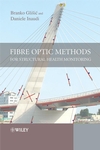
Edward Sazonov, assistant professor of electrical and computer engineering at Clarkson University, recently collaborated with faculty from the National University of Malaysia (Universiti Kebangsaan Malaysia, UKM) to perform bridge experiments on location in Malasia. UKM sponsored Sazonov’s visit, which focused on wireless bridge monitoring technologies that he has developed at Clarkson with substantial funding from the New York State Energy Research and Development Authority (NYSERDA).
The task of structural health monitoring of highway bridges and overpasses has gained significant attention in recent years. Monitoring the health status of bridges is not only a matter of preventing economic losses from traffic delays and detours, but also an issue of preventing catastrophic failures and loss of human life as occurred in Minneapolis just a year ago. Unfortunately, this has become a worldwide problem as many countries recently have realized a significant increase in the number of aging bridges constructed 50 years ago and more.
Sazonov’s group has developed a wireless system, which provides utility similar to a conventional wired system, but does not need wires. The wireless sensors are capable of time-synchronous data acquisition and 100 percent data delivery in a scalable system that can include hundreds of distributed sensors. Sazonov’s research shows that synchronization on the level of microseconds is required for vibration analysis of highway structures. Sazonov’s system satisfies such stringent requirements and can serve as a platform for applications of structural health monitoring that use vibration.
The experiments in Malaysia followed earlier experiments in New York State in which 44 wireless sensors were deployed on a steel girder bridge. The goal of the joint experiments with UKM was to test the system’s applicability to different construction technologies and different environments. In the experiment, the sensor network was installed on a pre-stressed concrete bridge. Then, the vibration response of the structure, due to passing traffic, was analyzed to provide information useful for damage detection.
The results of the experiments demonstrated that the system can be deployed successfully on structures constructed using different technologies. This was good news to Muhammad Fauzi Mohd Zain, who is deputy dean and co-director, Advanced Engineering Centre, Faculty of Engineering at UKM and Sazonov’s Malasian host. "In Malaysia, commonly we use visual inspection routinely to detect small cracks or defects. It is like finding a needle in a haystack and impossible in areas that are inaccessible or hard to access," said Zain. "Gradually such constraints are being overcome with emerging new technologies... for vibration based monitoring of structures."




No comments:
Post a Comment